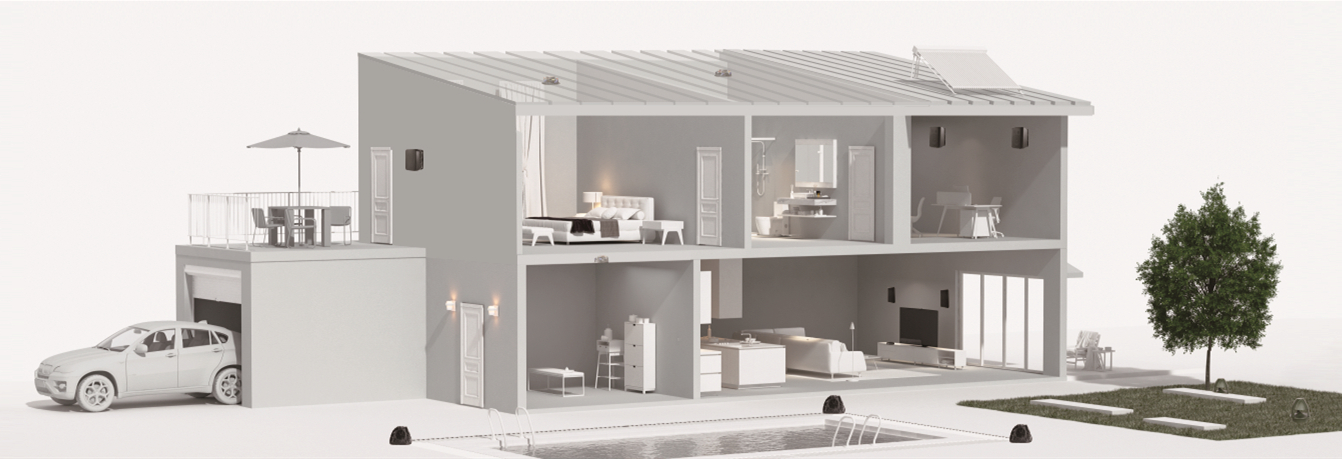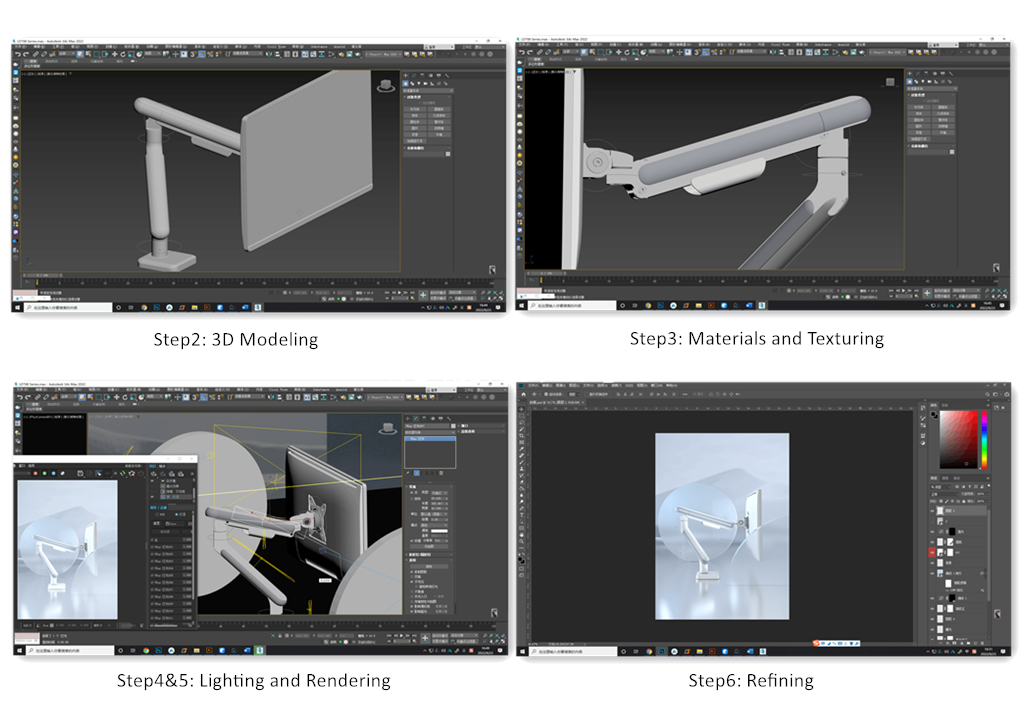A Guide forthe 3D Visualization Art
sept 27, 2022
Nowadays, many people search for 3D rendering services on Google or Amazon. Rendered pictures and animations have been widely used in our daily life. Thus, this article is written to help you have an overview about 3D visualization art and its rendering process and costs.

Created by treefruit. Do not use without permission
What is 3D Rendering?
3D rendering refers to the graphics process of turning the 3D models into 2D images or animations by a computer.
3D rendering art may include two styles: photorealistic or non-photorealistic styles. A photorealistic style 3D rendering image could be an image of the building interior or a product design image (such as a rendering image of a piece of furniture or a car). A non-photorealistic style image could be a computer graphic that focuses on digital art, which has widely appeared in scientific movies or video games.

Photorealistic Styles

Non-Photorealistic Styles
Created by treefruit. Do not use without permission
With the development of computer graphics technology today, 3D rendering is more and more often used in various fields, these including architecture, product design, advertising,animation, or video games. 3D render art has brought audiences the compelling visuals and feelings that they will never experience in the reality.
How to Make Renders?
To make 3D renders, you should have specific software and great skill.
Firstly, use specialized software to generate images. There are large amounts of software available in the market for 3D rendering. Some of the best and well-used software would include Maya, 3ds Max and Blender. This three software can do both the 3D modelling, animation and rendering and some of them has free trails.
Secondly, learn the process of rendering 3D graphics. Here are six basic steps below, but a 3D artist does not need to follow all this order and could just jump between these processes.
Step1: Understand the Requirements of ClientsBefore modeling, 3D artists should fully understand the clients’ requirements. Through the description, product draft, competitive products or other information provided by the clients, they should have the ability to visualize the project in mind and have a rough plan for the model.
Step2: 3D ModelingThe 3D artists will create a digital product modelor a digital scene according to the requirements of clients using specialized 3D modeling software. They create common geometries such as cubes and spheres through the built-in model of the software, and use polygon model to create complex 3D models. In this step, the digital modelis a mathematical expression of products.
STEP 3: Materials and TexturingMaterials and texturing are often key indicators for photorealistic 3D rendered images. The objects and scenes are colorless when building the models, 3D artists should apply materials and texturing to the 3D models to make them look as real as possible. In most cases, the artists need to adjust the color, texture, smoothness, transparency, reflectivity, and other parameters of the models depending on the software used.
STEP 4: LightingThe light will directly affect the visual effects of the 3D rendering images. 3D artists set up outdoor sunlight or indoor ambient lights in the 3D scenes to replicate actual natural or professional lighting. The highlights, reflections and diffuse reflections of different objects are different, and a good set of lighting can greatly enhance the sense of reality of the objects in 2D images.
STEP 5: RenderingWhen the materials and lights of the models or scenes are set up, it is time to start rendering. This process is like taking a photo in real world. In the 3D software, the models and scenes can be seen from any angle. When generating the static 2D images, the artists need to consider the position of the camera and the displaying angles of the models or scenes. In addition, rendering time of different images are different, which is greatly depending on the complexity of the scenes and the quality desired for the image.
Step 6: RefiningAfter finishing the rendering process, 3D artists need to do additional PS and editing processing to fine-tune the images. They need to further adjust the texturing, lighting, or other aspects of the images to make images meet and exceed the clients’ expectations. And final 2D images or animations are provided to the clients for feedback.

How Does 3D Rendering Work?
3D animation creates an artificial and fictitious world based on what people dream up. With the developing of 3D rendering technology, people can render anything in their mind. For many industries such as architecture, engineering and retail, 3D rendering makes life easier.
Every time when you have an inspiration or have a preliminary idea for some designs, 3D renders allow you to actualize and see your designs long before the construction or production of products. In other words, 3D rendering is one of the most convenient and economical ways to present your products.
What’s more, 3D renders or animation is a fascinated way to explain selling points of your products or display the products. 3D animation can explicitly show the disassembled state of the product, whichallows audiences to see the internal constructures of the products and how they work. And this will push audiences to making buying decisions. It’s really a powerful tool to help increase sales.
How Much Does 3D Visualization ServiceCost?
3D visualization serviceal ways includes 3D picture rendering and 3D animation rendering. Compare to traditional product photography and videography, 3D visualization service is much more affordable due to its low dependence on equipment, set constructions, actors/actress or other factors while bringing more delicate graphics and visual effects.
The price of 3D visualization service varies, which mainly depends on the service you need and the difficulties of the rendering project. Treefruit has diversified rendering services to handle your creative needs with reasonable price. From professional imagery to high quality videos, treefruit can provide your business with marketing collateral that provides fuel for growth. Learn more about 3D visualization service and other services.

